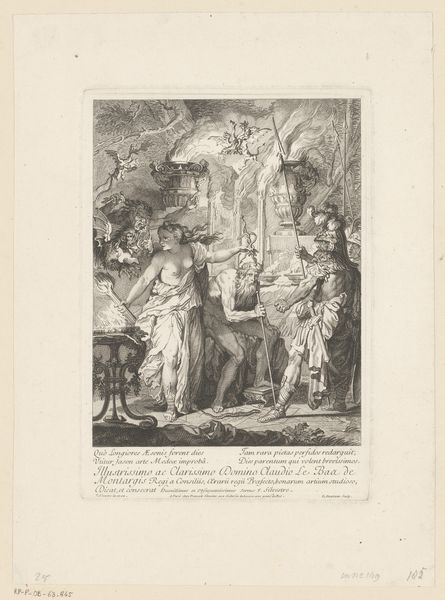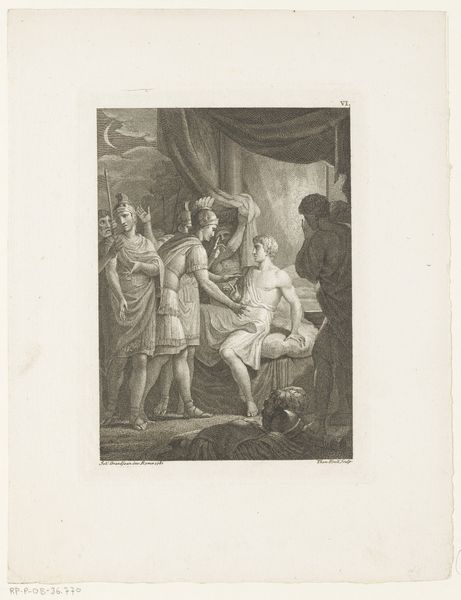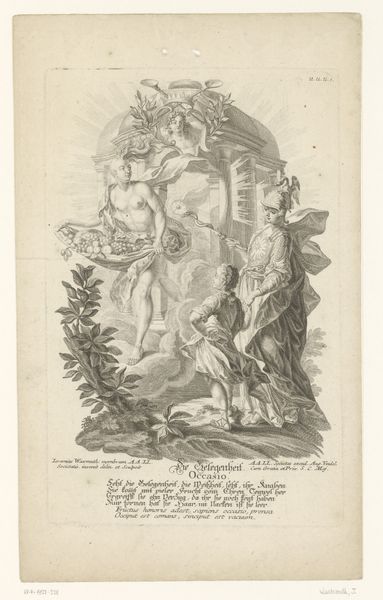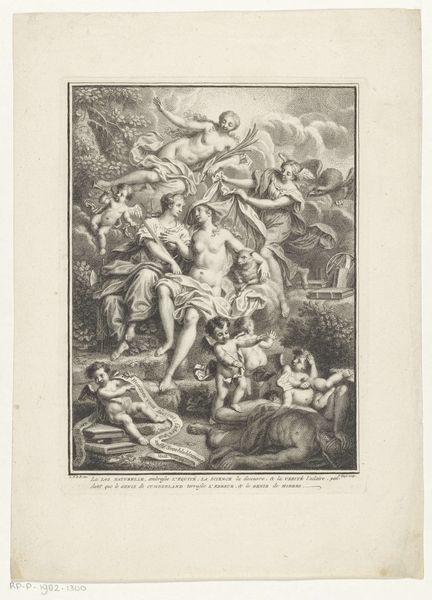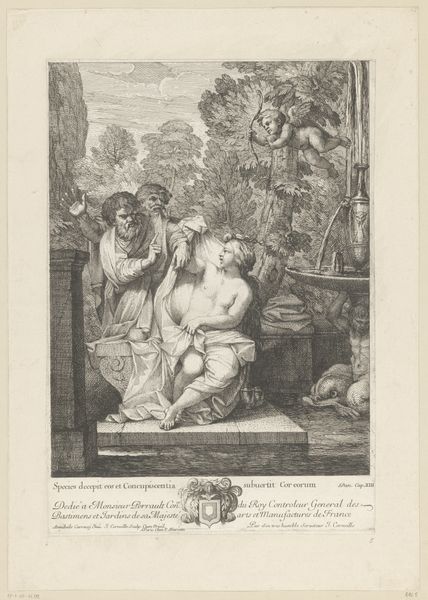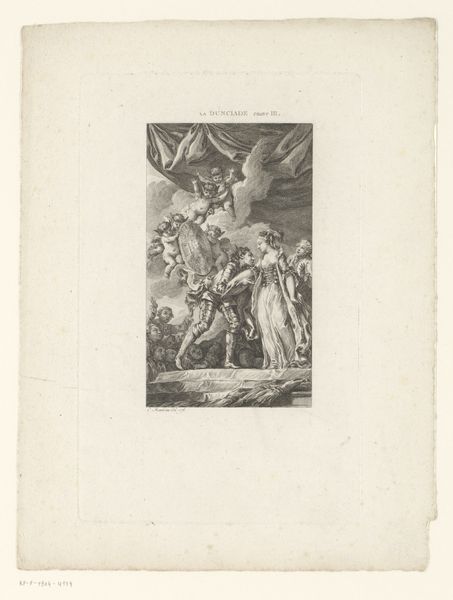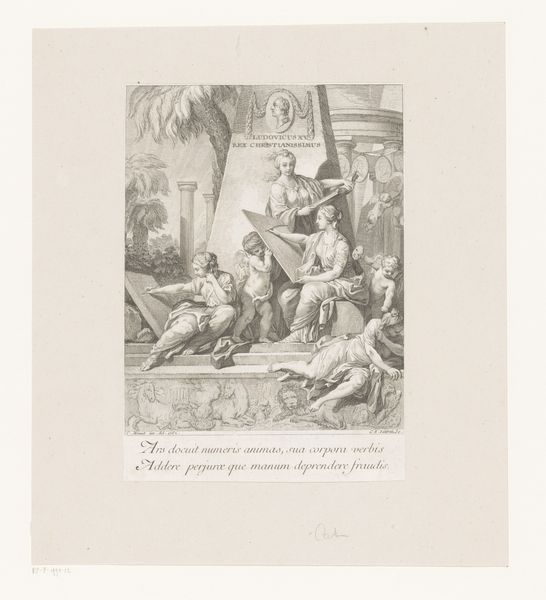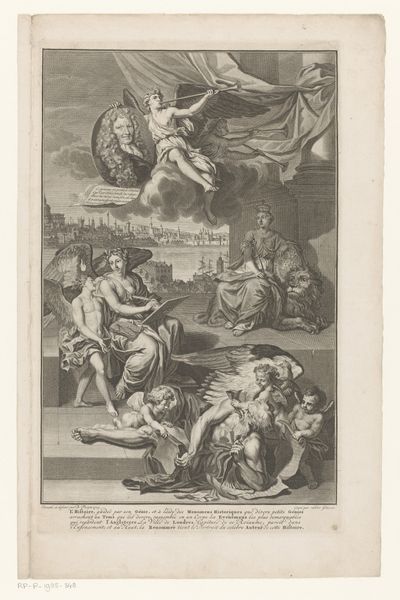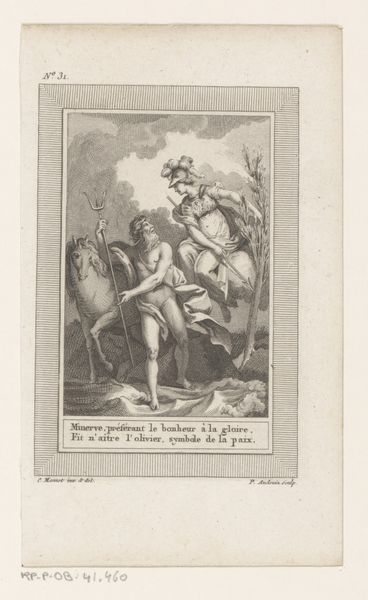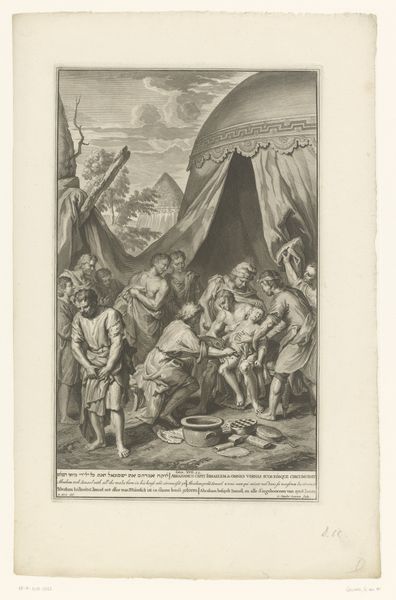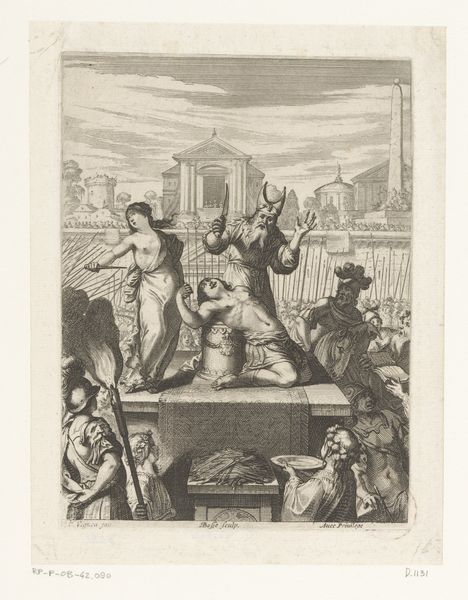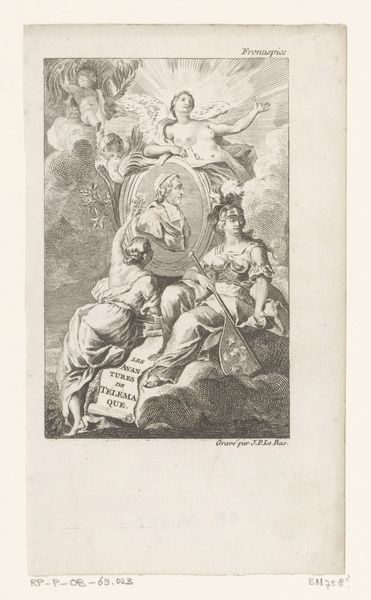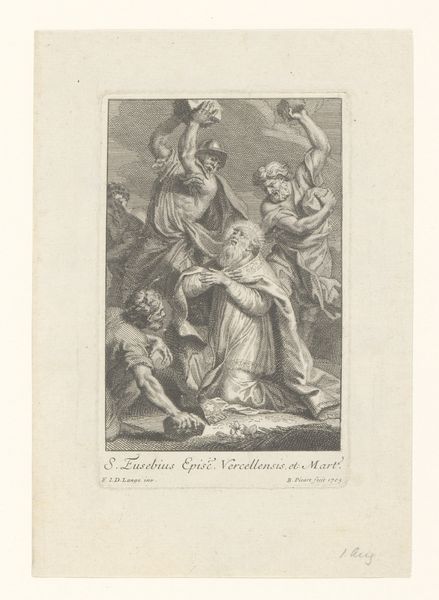
Allegorische voorstelling met buste van Peter Paul Rubens Possibly 1791 - 1794
0:00
0:00
jeanantoinepierron
Rijksmuseum
Dimensions: height 296 mm, width 228 mm
Copyright: Rijks Museum: Open Domain
Curator: This print, housed here at the Rijksmuseum, is called "Allegorical Scene with Bust of Peter Paul Rubens" by Jean Antoine Pierron, likely created between 1791 and 1794. Editor: It strikes me as instantly theatrical. All these figures swirling around the central bust… it's a celebration, or perhaps an apotheosis, frozen in time. The rendering of light is magnificent, especially considering it’s just ink on paper. Curator: Exactly. Consider the political climate then—France undergoing revolution, deeply intertwined with evolving notions of fame and artistic legacy. Rubens, long deceased, becomes a symbol... Editor: I notice the figure with the wreath – clearly an allegory for glory or fame bestowing laurels upon Rubens' sculpted likeness. And then, beside the pedestal, are those other female figures holding a palette, lute, compass… The tools and Muses of the arts. A very classical vocabulary of symbols being used. Curator: And notice the placement of the Rubens bust, elevated on a plinth inscribed with his name; it evokes ancient Roman portraiture traditions, further cementing his status as an immortal artistic genius. This was intended to solidify the idea of ‘greatness’ – a powerful tool for constructing a national artistic identity in turbulent times. Editor: It’s interesting how the print medium itself contributes. Engravings allowed for wide distribution. It was how the image – the myth – of Rubens was disseminated, beyond paintings owned only by elites. The image itself becomes an artifact in constructing the popular appeal of baroque ideas and personalities. Curator: Precisely. Reproducing his image served to popularize artistic values linked to his distinctive style across a growing middle class audience. And through public consumption of these images, his image became standardized and reproducible. Editor: It makes you wonder about the intentions. The allegory might be about glorifying artistic achievement, or about reinforcing specific notions about whose achievements matter. The symbolism of these forms carries with it ideas about cultural production and public life we may not even agree with anymore. Curator: Agreed. Understanding this print requires deciphering how the symbols function both within the piece and how it functioned within its specific political context. Editor: A fittingly layered portrait then – or rather, print. Curator: A perfect encapsulation of an era wrestling with legacies.
Comments
No comments
Be the first to comment and join the conversation on the ultimate creative platform.
